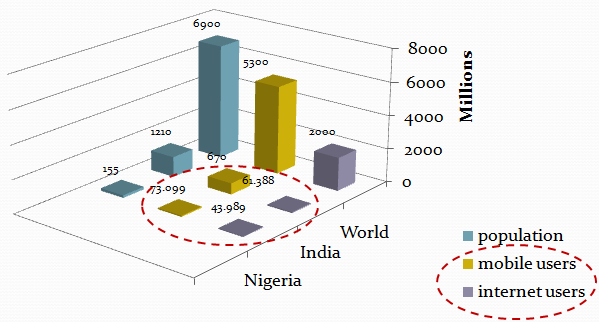




Conclusion
With a population of 1.2 billion and 155 million in India and Nigeria and a rural population of 870 million and 77.5 million respectively, the graph below shows the statistics of mobile and internet users in both countries.

The graph helps to better understand the reality of communication hurdles rural dwellers have to endure if the present mode of power generation by the mobile operators persists. There is obviously a need for a change to alternative sources of power generation for the telecoms industry.
Hence in this study the following were achieved:
- Improved battery efficiency: This was achieved by using DC generators thereby avoiding the use of converters which would have led to transmission and conversion losses.
- Achieved a storage capacity for 6 days of autonomous operation: by using the Homer software tool, an 8% discharge rate was achieved, which helps to provide uninterrupted electrical energy for a period of 6 days. The current industry standard for most off grid base station sites is three days.
- Wind and solar power are viable alternatives to diesel energy generation in both Nigeria and India with an all year round of renewable energy supply.
- Achieved 47 metric tons of CO2 savings per BTS site.
In summary, if telecom operators are able to save on diesel fuel and diesel generator purchase, they can upgrade their networks more often so as to offer better services at more competitive and affordable prices which would encourage the rural dwellers to realize their dreams of connecting to the world.
